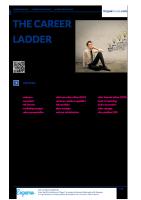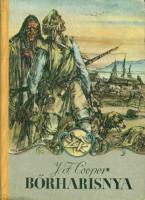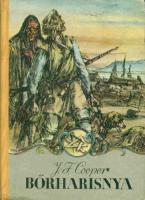Vaccine Pioneers British English Student Ver2 [PDF]
HEAAADERLOGORIGHT GENERAL ENGLISH · VOCABULARY DEVELOPMENT · ADVANCED (C1-C2) VACCINE PIONEERS Scan to review workshe
31 0 471KB
Papiere empfehlen
![Vaccine Pioneers British English Student Ver2 [PDF]](https://vdoc.tips/img/200x200/vaccine-pioneers-british-english-student-ver2.jpg)
- Author / Uploaded
- Alicia Montenegro
Datei wird geladen, bitte warten...
Zitiervorschau
HEAAADERLOGORIGHT GENERAL ENGLISH
· VOCABULARY DEVELOPMENT
· ADVANCED (C1-C2)
VACCINE PIONEERS Scan to review worksheet
QrrkoD
Expemo code: 12MI-C3VF-5DCJ
1
Warm up
Define the term: ”life expectancy.”
Summarise the information in the graph in one sentence.
Why has this change occurred? Think of three reasons.
FOOOOTERRIGHT Learn without forgetting!
Scan the QR at the top of Page 1 to review the lesson flashcards with Expemo. © Linguahouse.com. Photocopiable and licensed for use in Alicia Montenegro's lessons.
1/6
HEAAADERLOGORIGHT ADVANCED (C1-C2) VACCINE PIONEERS
2
Before you read Work in A/B pairs. Complete the matching exercises to check the meaning of the words in bold. Then explain your words to your partner. Student A 1.
Global life expectancy improved ...
2.
If you get a rash on your skin ...
3.
If you don’t want to infect your colleagues with your cold, ...
4.
It’s possible that people who’ve already had the disease ...
5.
Malaria is a disease that is transmitted ...
6.
Most countries have a childhood ...
a.
... after serious diseases were completely eradicated.
b.
... by mosquitoes.
c.
... make sure you don’t cough or sneeze in their faces.
d.
... vaccination programme.
e.
... will be immune to it for at least a few months.
f.
... you should visit the chemist and ask for a cream to control the itching.
Student B 1.
People who have contracted Ebola ...
2.
Scientists are trying to develop a vaccine ...
3.
Some complications of diabetes include ...
4.
The National Health Service in the UK ...
5.
The World Health Organization is sending a medical team to deal with ...
6.
This disease is very contagious ...
a.
... against the Covid 19 virus.
b.
... a local outbreak of influenza in the east of the country.
c.
... heart disease and blindness.
d.
... is funded by the government, through taxes.
e.
... must be moved to hospital and treated immediately.
f.
... so you need to wear a mask in public.
FOOOOTERLEFT
Learn without forgetting! Scan the QR at the top of Page 1 to review the lesson flashcards with Expemo. © Linguahouse.com. Photocopiable and licensed for use in Alicia Montenegro's lessons.
2/6
HEAAADERLOGORIGHT ADVANCED (C1-C2) VACCINE PIONEERS
3
Read for main idea
Skim = read a text quickly in order to identify the main ideas and how these are organised
Skim the text ”Vaccine Pioneers” for no more than four minutes. Then cover the text and recall as much as you can.
Part 1
Part 2
Part 3
1. Who
2. What
3. When
4. How
Share your ideas in pairs or small groups. Make notes of up to three key words in each space.
FOOOOTERRIGHT Learn without forgetting!
Scan the QR at the top of Page 1 to review the lesson flashcards with Expemo. © Linguahouse.com. Photocopiable and licensed for use in Alicia Montenegro's lessons.
3/6
HEAAADERLOGORIGHT ADVANCED (C1-C2) VACCINE PIONEERS
Vaccine pioneers Average global life expectancy has more than doubled in the last two centuries. This is due to a range of factors including better nutrition, housing and working conditions, as well as improved scientific understanding of the causes of disease and its prevention. The development of vaccines against common serious illnesses has saved many lives. Part 1 Edward Jenner (1749-1823) was an English doctor who developed a way to prevent smallpox, a highly contagious disease caused by a virus which produces fever and a rash. Three out of ten people who caught smallpox died and survivors were left with terrible scars. Jenner was born in the English town of Berkeley. He left his hometown to study medicine, but then returned to Berkeley to work as a doctor. In 1796, a dairymaid came to see Jenner about a rash on her hand. Jenner immediately recognised that she was suffering from cowpox - a mild illness caused by a virus related to smallpox. Jenner had heard that people who caught cowpox seemed to be immune to smallpox and he wanted to test if this was true, by infecting someone first with cowpox and then with smallpox. He chose James Phipps, his gardener’s 8-year-old son, for the experiment. Jenner scratched the skin on Phipps’ arm and rubbed in some live material from the dairymaid’s cowpox rash. Phipps became mildly ill but recovered quickly. Then Jenner introduced some live material from a smallpox sufferer’s rash to Phipps’ body in the same way. Phipps did not become ill with smallpox, even when Jenner repeated the procedure. Jenner had established the basic idea of introducing material under the skin to produce protection against a disease. The process was named vaccination to acknowledge his work with cowpox - vacca means cow in Latin. Throughout his life Jenner continued to work on this procedure and received many honours from universities around the world. Other scientists continued his work and improved the smallpox vaccine after his death, making it safer and more effective. Despite the availability of a vaccination, smallpox continued to be a terrible problem in many parts of the world. A campaign against smallpox was introduced by the World Health Organisation (WHO) in 1959 but was not properly funded until 1967. Smallpox was not completely eradicated until 1980. Part 2 Polio is a viral disease which can cause muscle weakness leading to paralysis and even death. Outbreaks of polio have occurred regularly in the United States and Europe since the 19th century. Sufferers included US President Franklin D Roosevelt who used a wheelchair as a result of contracting polio when he was a young adult. Some victims were left unable to breathe independently and had to live in an iron lung. Polio was a major concern for many Americans throughout the first half of the 20th century. The breakthroughs in the fight against polio can be credited to two scientists: Jonas Salk and Albert Sabin. Jonas Salk (1914 - 1995) was born in New York City. He trained as a doctor but went into academic research at the University of Pittsburgh. In 1947 he began to study the polio virus and by 1951, he had developed a killed virus vaccine, made from viruses grown in a laboratory and then destroyed. Testing for the vaccine began in 1952; Salk used his wife and three children as part of the early trials. By 1955, his vaccine was in general use and the number of polio cases in the US had fallen dramatically. Many Americans, panicked about the possibility of contracting polio at swimming pools and other public FOOOOTERLEFT
Learn without forgetting! Scan the QR at the top of Page 1 to review the lesson flashcards with Expemo. © Linguahouse.com. Photocopiable and licensed for use in Alicia Montenegro's lessons.
4/6
HEAAADERLOGORIGHT ADVANCED (C1-C2) VACCINE PIONEERS
places, regarded him as a hero. Albert Sabin (1906-1993) was a Polish-born immigrant to the United States. After attending medical school, he worked as an academic medical researcher at the University of Cincinnati College of Medicine. He demonstrated that polio was an infection of the digestive tract, transmitted by swallowing dirty water. Sabin believed that he could produce a more effective vaccine against polio by using weakened live viruses and by introducing these into the body through the mouth, rather than through the skin. The oral vaccine was successfully tested worldwide, in a co-operative programme involving Mexico, the Netherlands and the Soviet Union. In 1960, the United States approved Sabin’s vaccine. It is now the main protection against polio throughout the world - cheap, easy to use and effective. Sabin continued to research viruses and their connection with cancer. Salk studied AIDS and HIV and also wrote about philosophy. Neither man profited financially from their discoveries. Part 3 A new influenza virus appears and the race is on to develop a vaccine. This sounds familiar, but the year is 1957, not 2020. Maurice Hilleman (1919-2005), a microbiologist working for the US Army, identified the virus and partnered with the pharmaceutical industry to direct the development of a vaccine, saving many lives. The vaccine was produced in just a few months, although, due to stronger safety regulations, this would not be possible today. In 1963, Hilleman was working for the pharmaceutical company Merck. One night, his four-year-old daughter woke up with symptoms of mumps. Although mumps was a common childhood illness, it could lead to severe complications, including deafness. Hilleman collected a sample from his daughter and used a weakened form of this virus to develop a safe, effective vaccine. Some years later, his baby daughter received the vaccine which had been developed from the sample given by her older sister a unique example of a sibling protecting, rather than infecting, a young child. At Merck, research was well-funded and Hilleman was able to lead the development of more than 40 vaccines for both humans and animals. These included vaccines against measles and rubella, which, along with the mumps vaccine, are now routinely offered to children as the MMR. In 1998, an article was published which claimed that the MMR caused developmental disabilities in children, leading to an anti-vaccination movement amongst many parents. The link was disproved and the World Health organisation (WHO) estimates that between 2000 and 2015, over 20 million deaths were prevented by the measles vaccine alone. Interestingly, Hilleman very nearly didn’t become a microbiologist. As a young man he had been happily working in sales - his older brother convinced him to attend university. It is claimed that he saved the lives of more people than any other 20th century scientist, even though he did not receive much public recognition. Sources: jenner.ac.uk/about/edward-jenner, cdc.gov/smallpox/history/history.html, biography.com/scientist/jonassalk, britannica.com/biography/Albert-Bruce-Sabin, en.wikipedia.org/wiki/Polio, nationalgeographic.com/history/2020/05/virologist-maurice-hilleman-saved-millions-children-stoppedpandemic/, ourworldindata.org/
FOOOOTERRIGHT Learn without forgetting!
Scan the QR at the top of Page 1 to review the lesson flashcards with Expemo. © Linguahouse.com. Photocopiable and licensed for use in Alicia Montenegro's lessons.
5/6
HEAAADERLOGORIGHT ADVANCED (C1-C2) VACCINE PIONEERS
4
Read for detail According to the text, which person/people do these statements relate to? Write EJ (Edward Jenner), JS (Jonas Salk), AS (Albert Sabin) or MH (Maurice Hilleman) next to each statement.
5
1.
Used their own families in their research
2.
Were qualified to treat patients
3.
Received public recognition for their work
4.
Altered viral materials to use in their vaccine
5.
Worked
primarily
in
an
academic
environment 6.
Did their research in conditions that would not be allowed today
Vocabulary in context Texts about technical subjects often contain unfamiliar vocabulary, so readers have to be able to work out the meaning of these words from the context. Use the context, your own knowledge and your imagination to explain the meaning of the words in bold in these sentences from the article. 1.
In 1796, a dairymaid came to see Jenner about a rash on her hand. Jenner immediately recognised that she was suffering from cowpox - a mild illness caused by a virus related to smallpox.
2.
Some victims were left unable to breathe independently and had to live in an iron lung.
3.
He demonstrated that polio was an infection of the digestive tract, transmitted by swallowing dirty water.
4.
Some years later, his baby daughter received the vaccine which had been developed from the sample given by her older sister - a unique example of a sibling protecting, rather than infecting, a young child.
5.
These included vaccines against measles and rubella, which, along with the mumps vaccine, are now routinely offered to children as the MMR.
6
Talking point Work in pairs or small groups to discuss any or all of these questions. 1.
What do you think about the use of children in the research you read about?
2.
Do you think it’s every parent’s responsibility to make sure their child is vaccinated? Why/not?
3.
Who do you think should pay for vaccination: individuals, health insurance companies or the government? Explain your ideas.
7
4.
Do you think it is morally right for medical researchers to profit financially from their discoveries?
5.
Do you know of any other medical pioneers - past or present?
Optional homework/extension Research and summarise (in your own words) recent progress in the development of a vaccine against Covid 19, Zika, Ebola or another virus. Write about 200 words and use vocabulary from the lesson.
FOOOOTERLEFT
Learn without forgetting! Scan the QR at the top of Page 1 to review the lesson flashcards with Expemo. © Linguahouse.com. Photocopiable and licensed for use in Alicia Montenegro's lessons.
6/6









